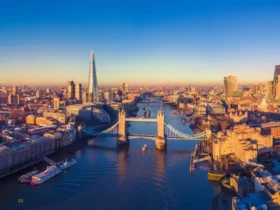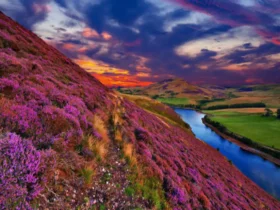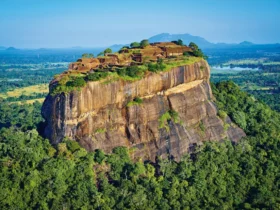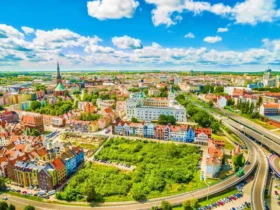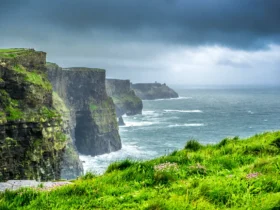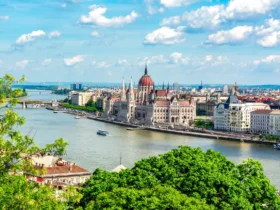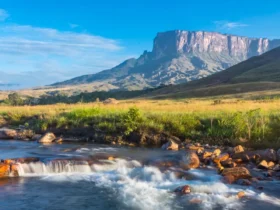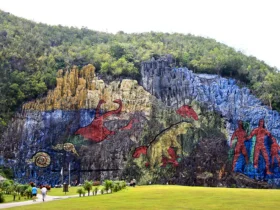The Dead Sea is a saltwater lake located in the Middle East, bordered by Jordan to the east and Israel and Palestine to the west.
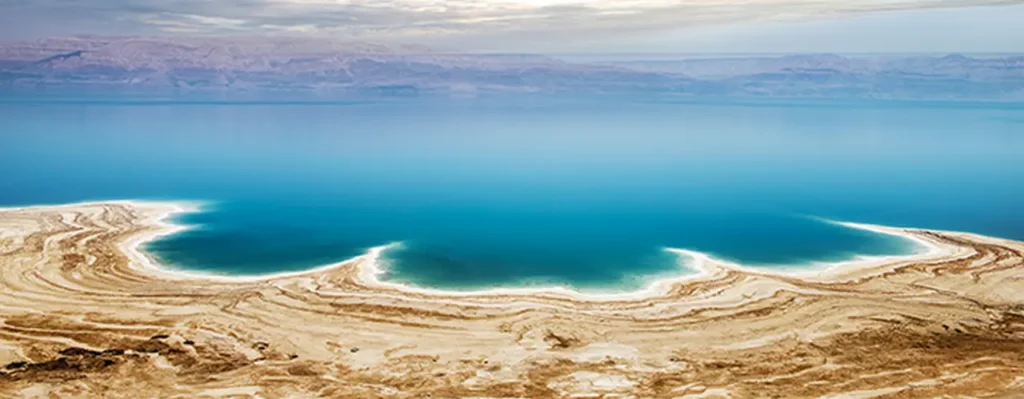
In this article, we will introduce you some features about the Dead Sea. This sea is not only a natural wonder but also a site of historical and cultural significance. Its mineral-rich waters, stunning landscapes, and unique experiences make it a destination that offers both relaxation and exploration opportunities for travelers.
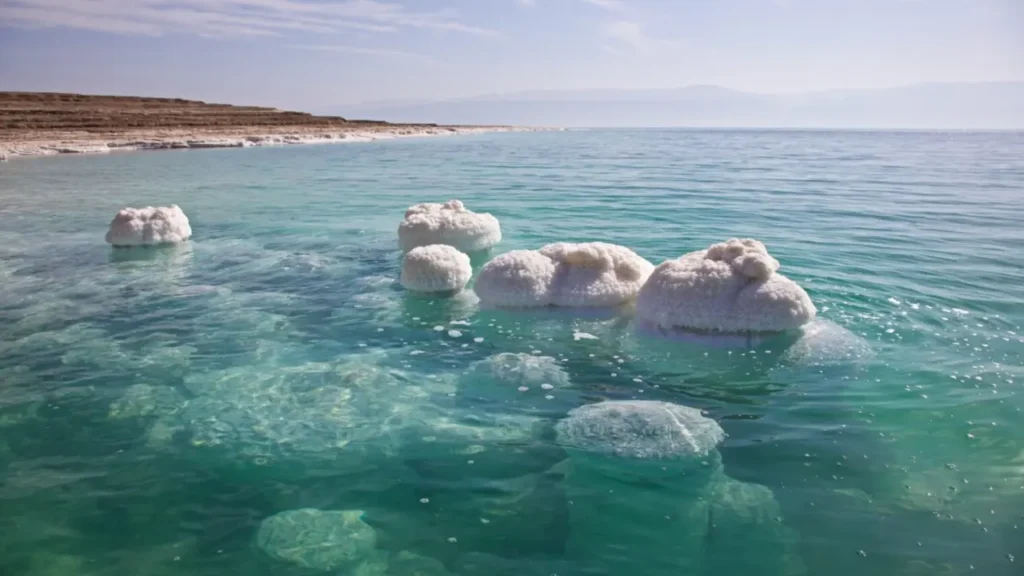
Let’s explore interesting facts about the Dead Sea together!
Unique Saltwater Lake
The Dead Sea is one of the most unique bodies of water on Earth. It is a saltwater lake, known for having an extremely high salt concentration, approximately 10 times saltier than the average ocean. This high salinity makes it difficult for organisms to survive in the water, hence the name “Dead Sea.”
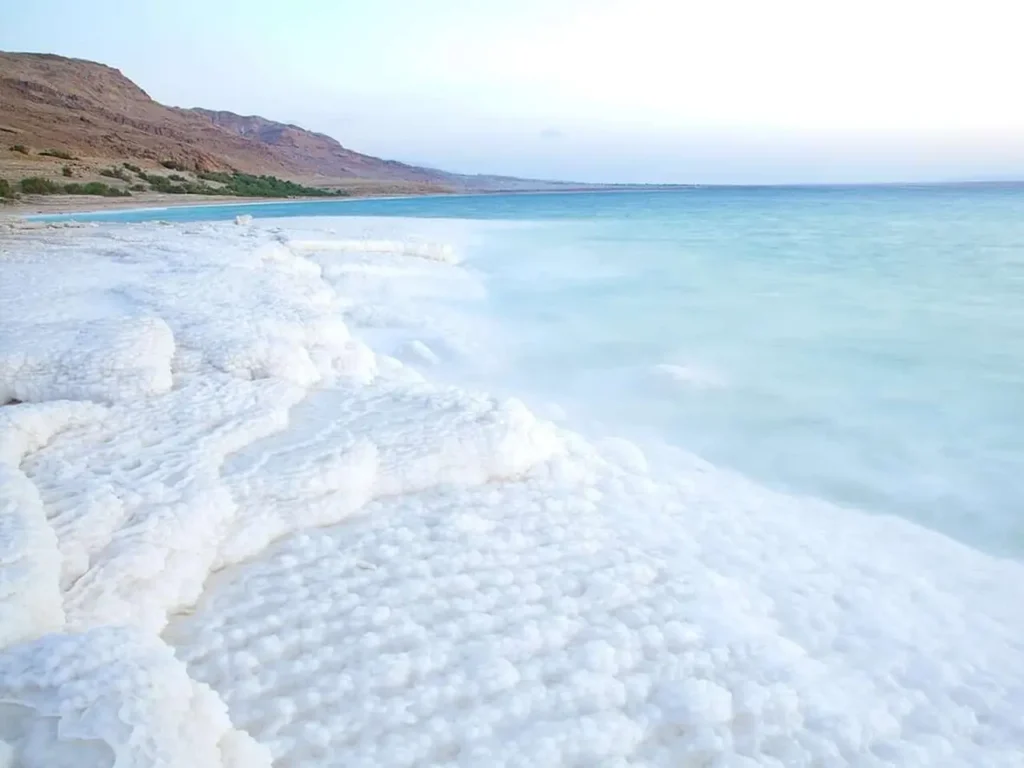
Lowest Elevation
The Dead Sea is located at the lowest point on Earth’s surface, sitting more than 1,400 feet (430 meters) below sea level. Its shores mark the lowest land elevation on the planet. This low elevation contributes to the unique climatic conditions and creates a captivating landscape.
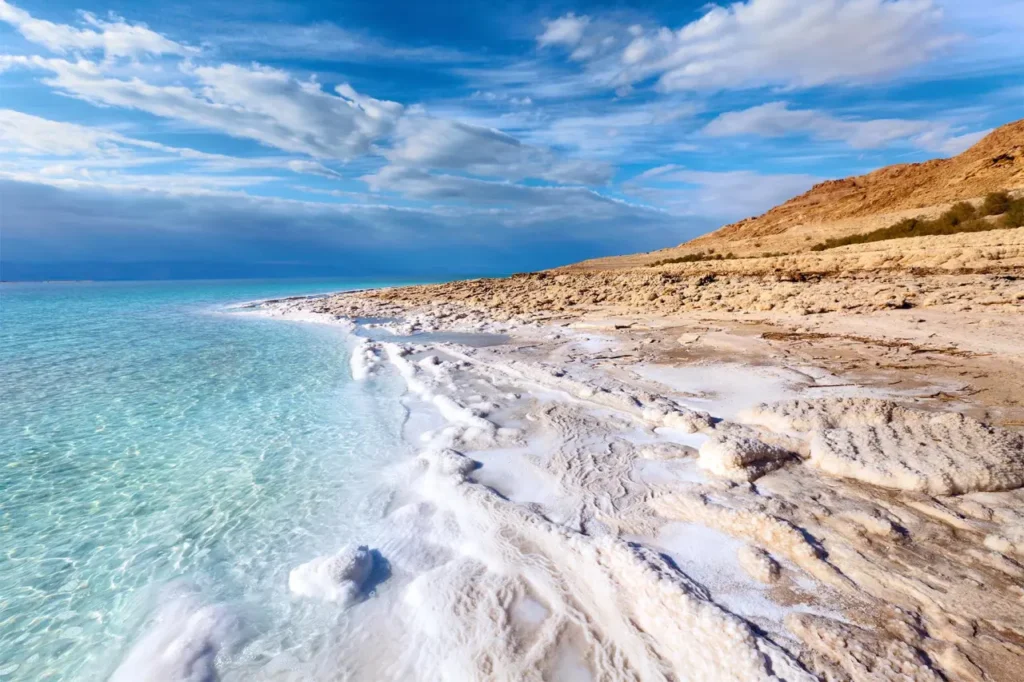
Geological Formation
The Dead Sea is part of the Jordan Rift Valley, which is a tectonic depression caused by the separation of the African and Arabian plates. The sea is located along the transform boundary where these plates meet. Its formation began millions of years ago, and its salty waters are a result of the evaporation of water from the sea, leaving behind high concentrations of minerals and salts.
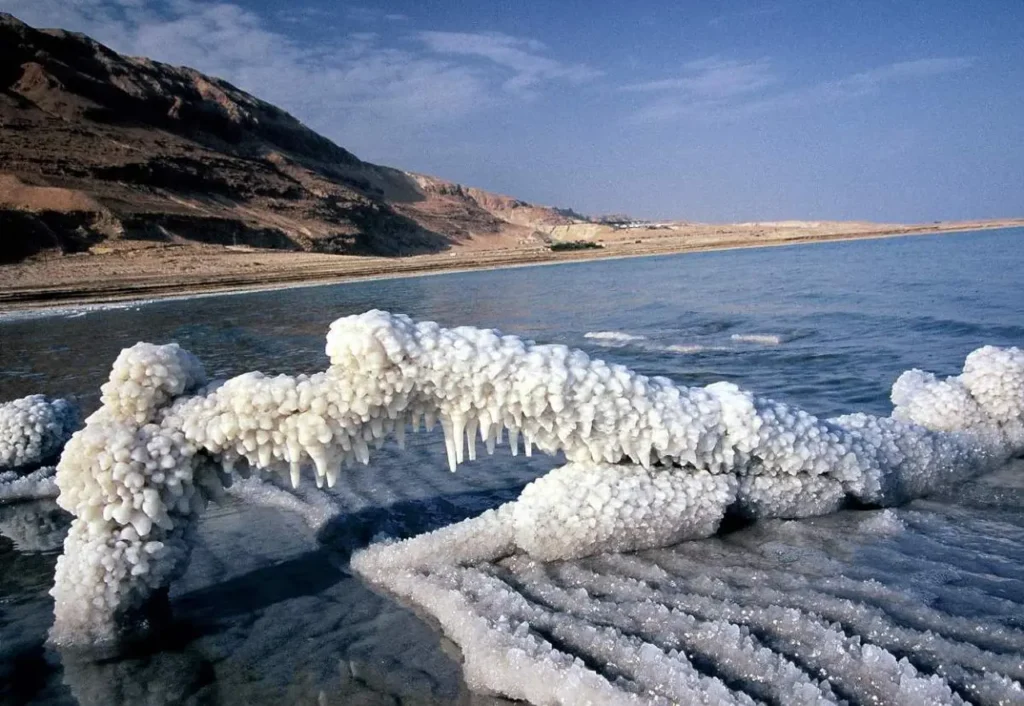
Salt and Mineral Content
The high salt and mineral content of the Dead Sea have made it renowned for its therapeutic properties. The water is rich in minerals like magnesium, calcium, potassium, and bromide. These minerals are commercially extracted from the sea for various purposes, including cosmetics, skincare products, and therapeutic treatments. Many people visit the Dead Sea to experience its healing properties, as the minerals are believed to have beneficial effects on various skin conditions, respiratory issues, and joint problems.
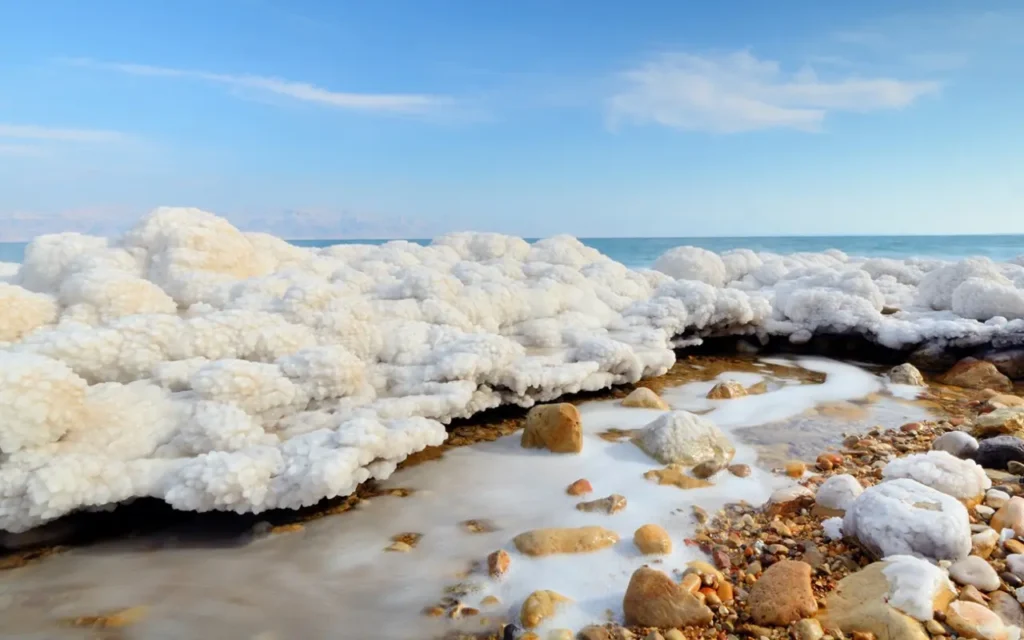
Buoyancy and Floating
Due to the high salt concentration, it is nearly impossible to sink in the Dead Sea. The water’s buoyancy is remarkable, allowing visitors to effortlessly float on its surface. This unique experience attracts tourists from around the world who come to enjoy the sensation of weightlessness.
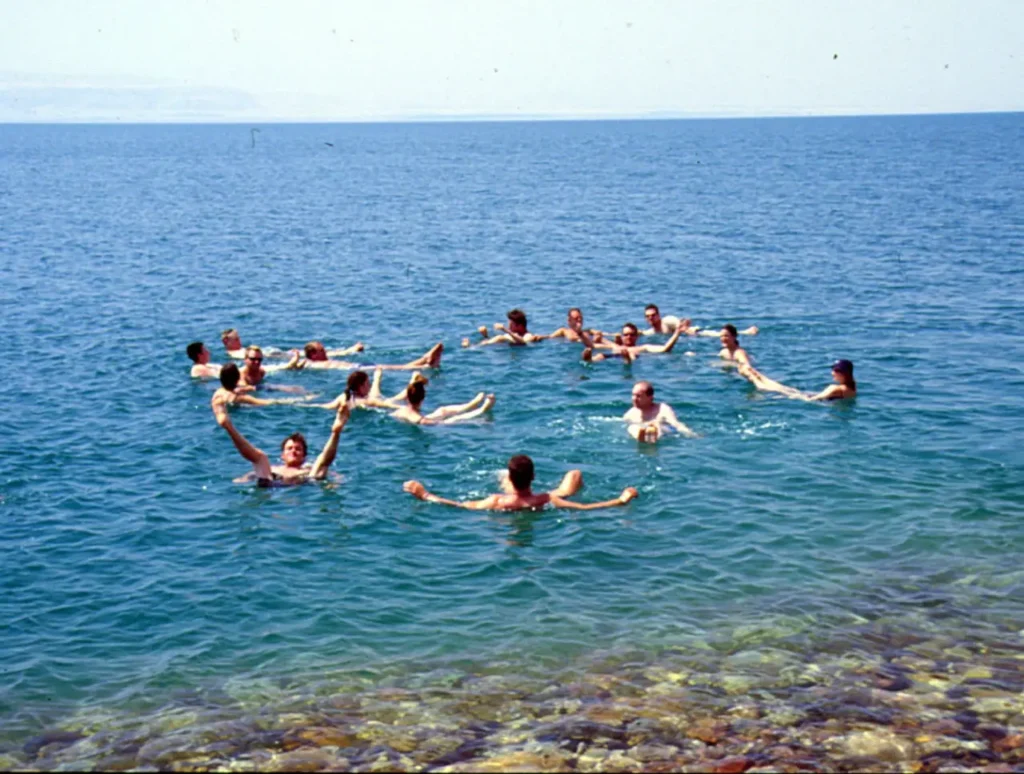
Mud and Mineral-rich Black Mud
The shores of the Dead Sea are lined with mineral-rich black mud. This mud is known for its exfoliating and nourishing properties. Many visitors cover themselves in the mud, letting it dry on their skin before rinsing it off in the salty water. The mud is believed to improve skin health, reduce inflammation, and leave the skin feeling refreshed and rejuvenated.
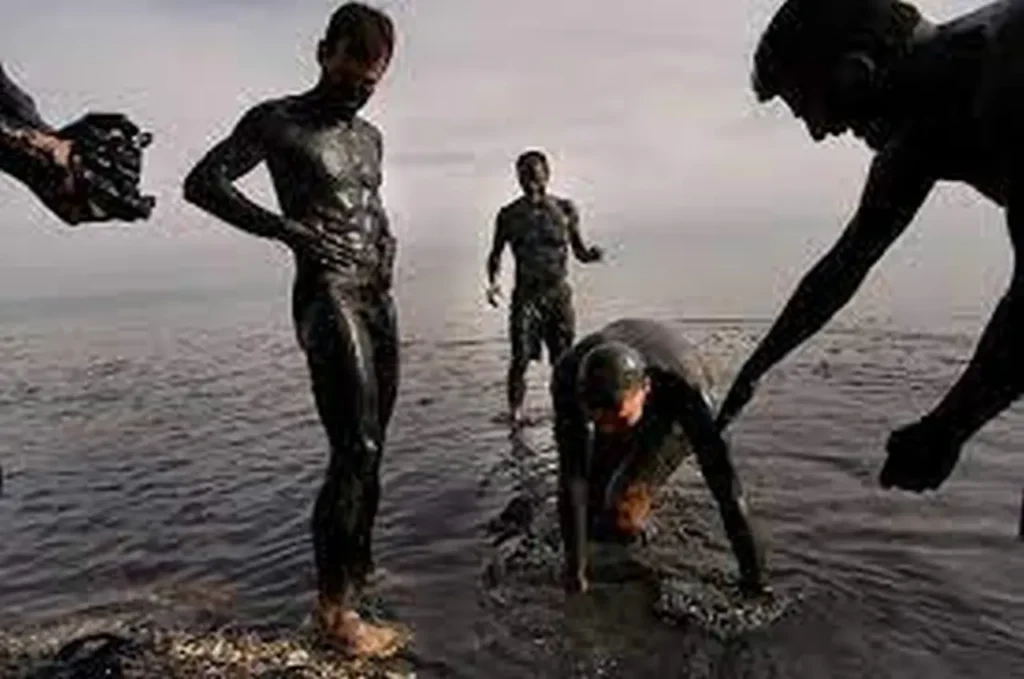
Tourism and Resorts
The Dead Sea has become a popular tourist destination, attracting visitors who come to experience its natural wonders and therapeutic benefits. Numerous resorts, hotels, and spas have been developed along the shores, offering a range of amenities and wellness treatments. Visitors can relax by the water, take mud baths, indulge in spa treatments, sunbathing, hiking, biking, off-road vehicle tours, and enjoy the unique atmosphere of the area.
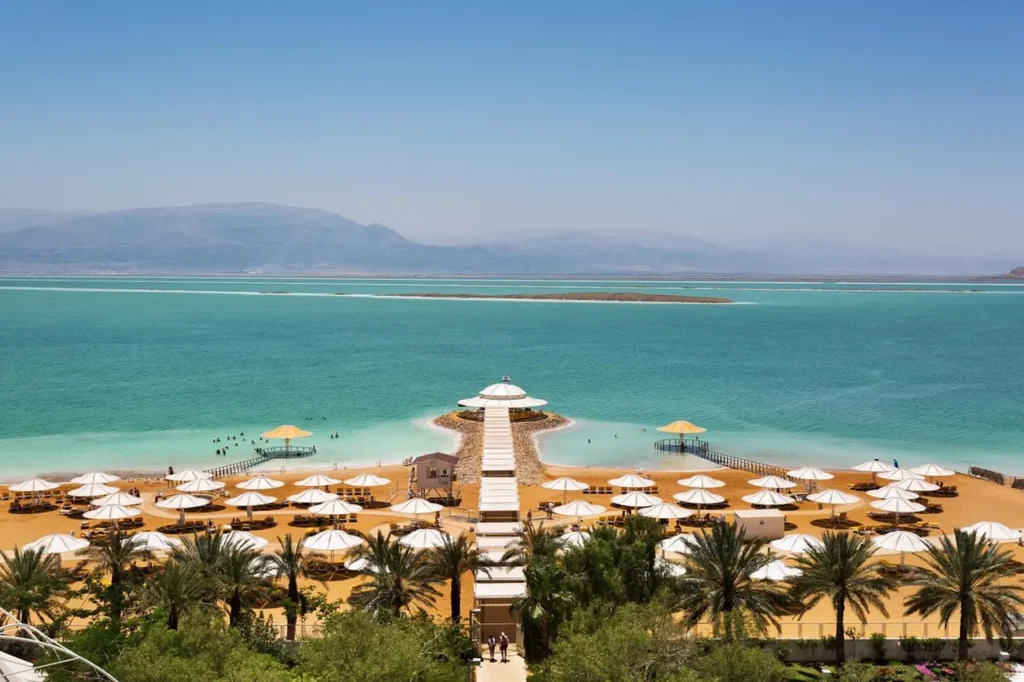
Many visitors come to the Dead Sea to experience the healing effects of its mineral-rich water and mud, which are believed to alleviate skin conditions such as psoriasis and eczema, as well as provide relief for respiratory and joint problems.
Environmental Conditions
The Dead Sea region has a unique climate. It is characterized by high temperatures, low humidity, and very little rainfall throughout the year. The evaporation rate is much higher than the replenishment rate, leading to a continuous decrease in the sea’s water level. As a result, the shoreline of the Dead Sea is receding at an alarming rate.
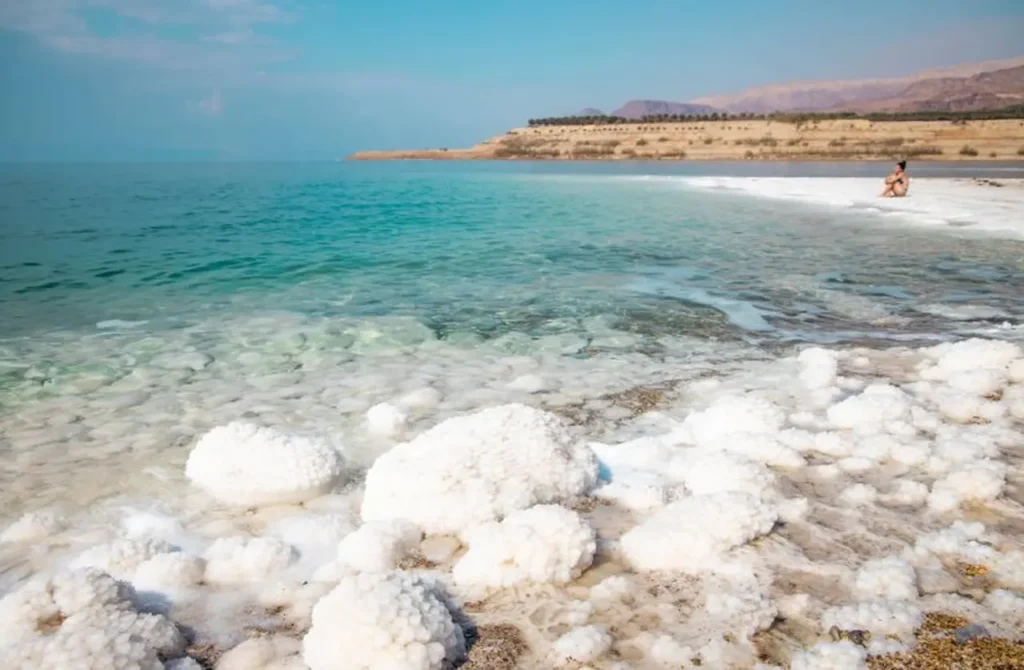
Natural and Historical Sites
The Dead Sea region is rich in natural and historical attractions. Nearby, you can find the ancient ruins of Masada, a UNESCO World Heritage Site, which was a fortress built by King Herod and later used by Jewish rebels. The Ein Gedi Nature Reserve, with its beautiful waterfalls and desert landscapes, is another popular destination in the area.
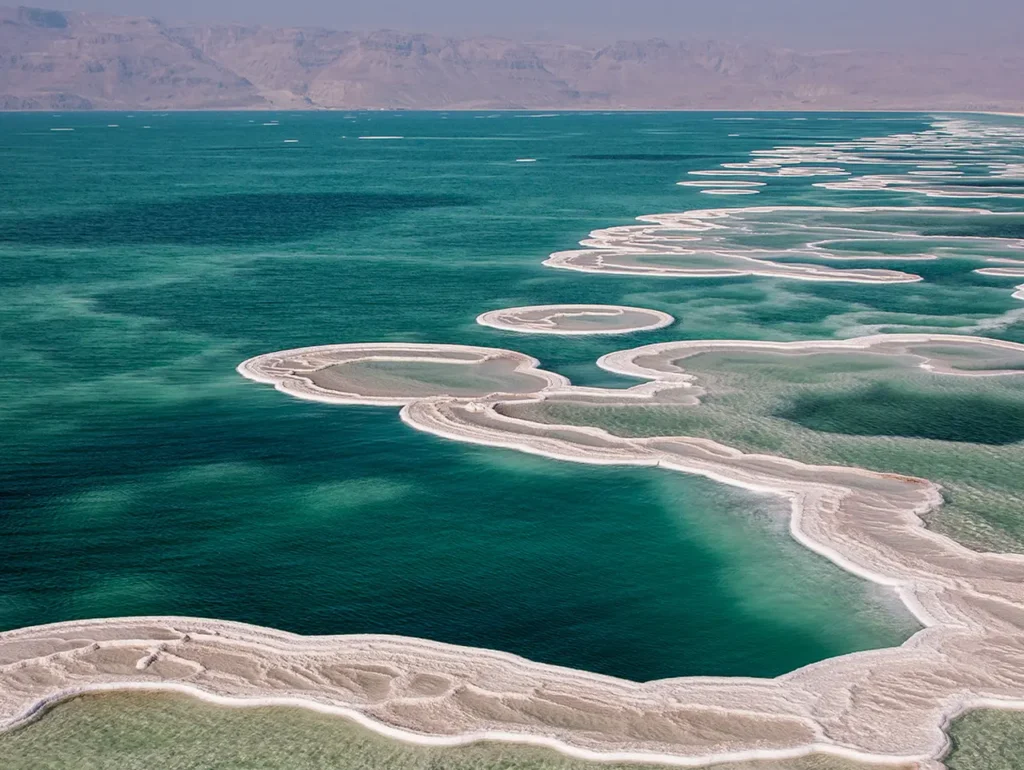
Visiting the Dead Sea provides a fascinating experience that combines natural wonders, historical sites, and wellness opportunities. The sea’s unique characteristics and the region’s captivating landscapes make it a popular destination for travelers seeking relaxation, rejuvenation, and a chance to explore the remarkable features of this extraordinary body of water.
What activities can do at the Dead Sea?
There are several activities you can enjoy at the Dead Sea. Here are some popular options:
Floating
The high salt concentration of the Dead Sea makes it extremely buoyant, allowing you to effortlessly float on its surface. It’s a unique and enjoyable experience that attracts visitors from around the world. Lie back, relax, and let the buoyancy of the water support you.
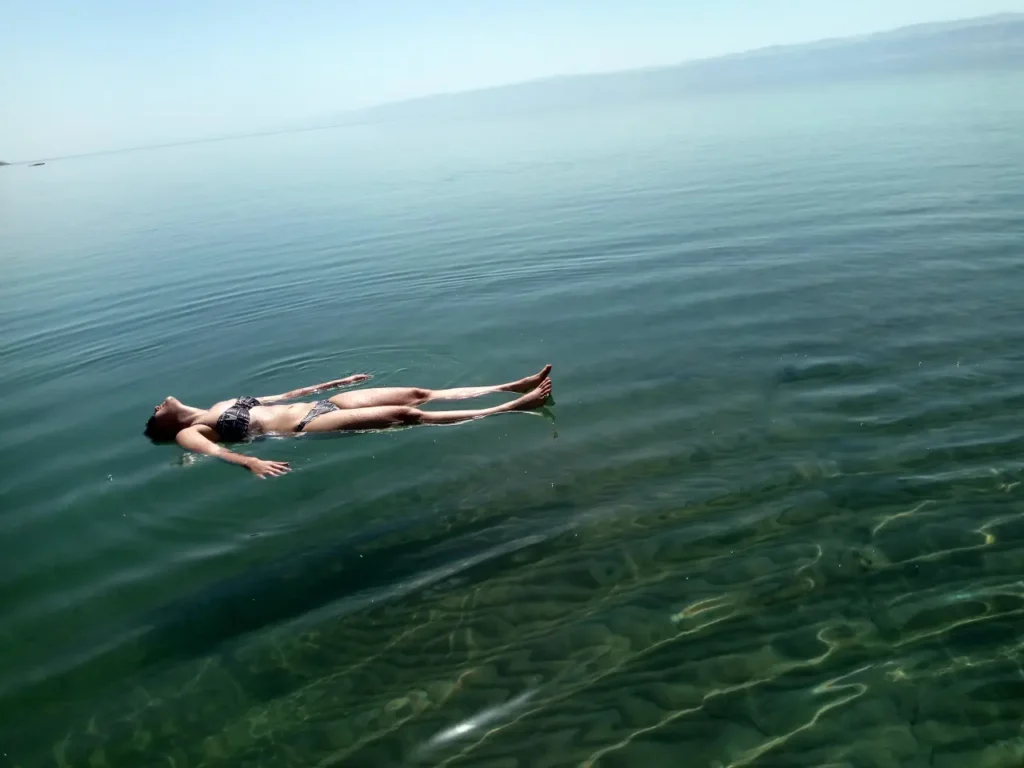
Mud Bathing
The shores of the Dead Sea are rich in mineral-rich black mud, which is known for its therapeutic properties. Many visitors cover themselves in the mud, let it dry on their skin, and then rinse it off in the sea. The mud is believed to have benefits for the skin, leaving it feeling soft and refreshed.
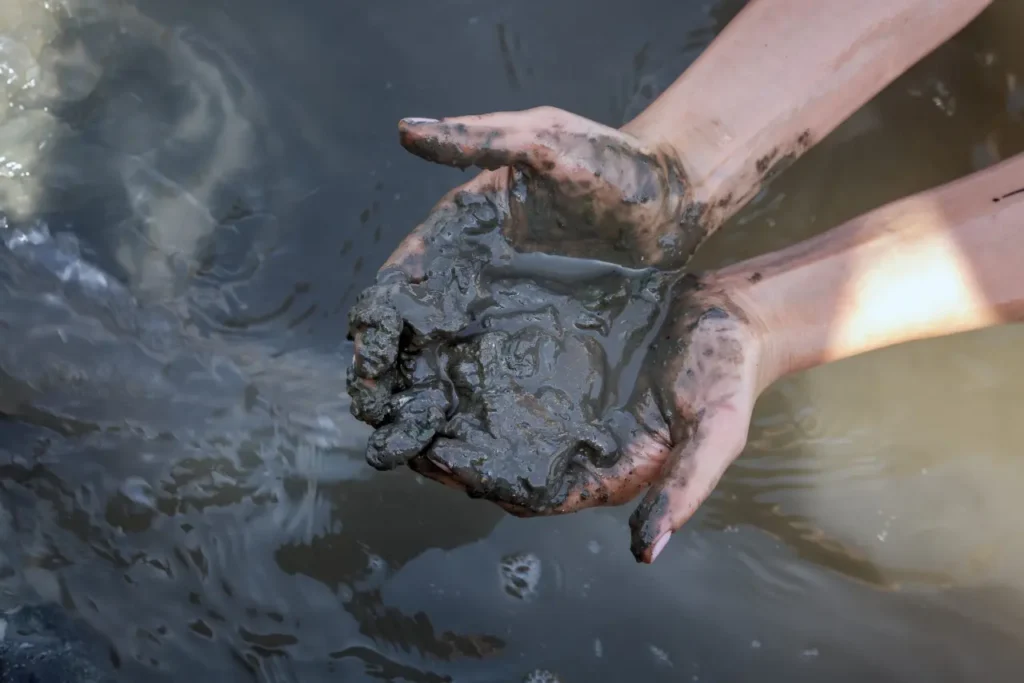
Swimming
While floating is the most popular way to enjoy the water, you can also swim in the Dead Sea. However, it’s important to be cautious and avoid getting water in your eyes, mouth, or any open cuts or wounds, as the high salt content can cause discomfort.
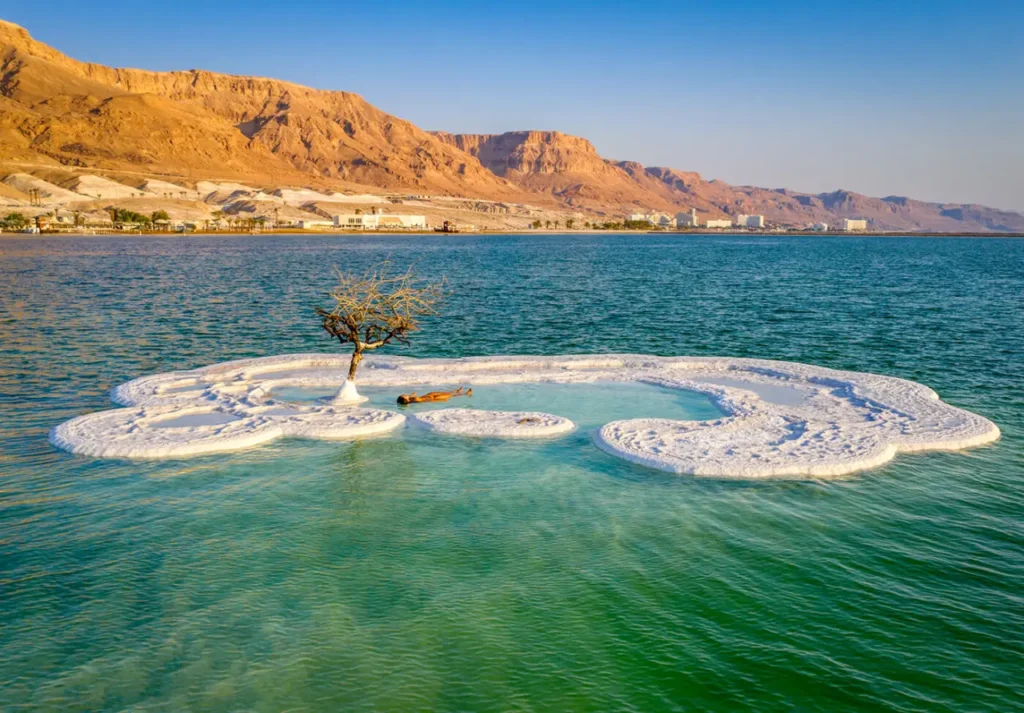
Spa Treatments
The Dead Sea region is home to numerous spas and wellness centers that offer a range of treatments utilizing the sea’s minerals and mud. You can indulge in massages, body wraps, and facials using Dead Sea products, which are believed to have rejuvenating and therapeutic effects.
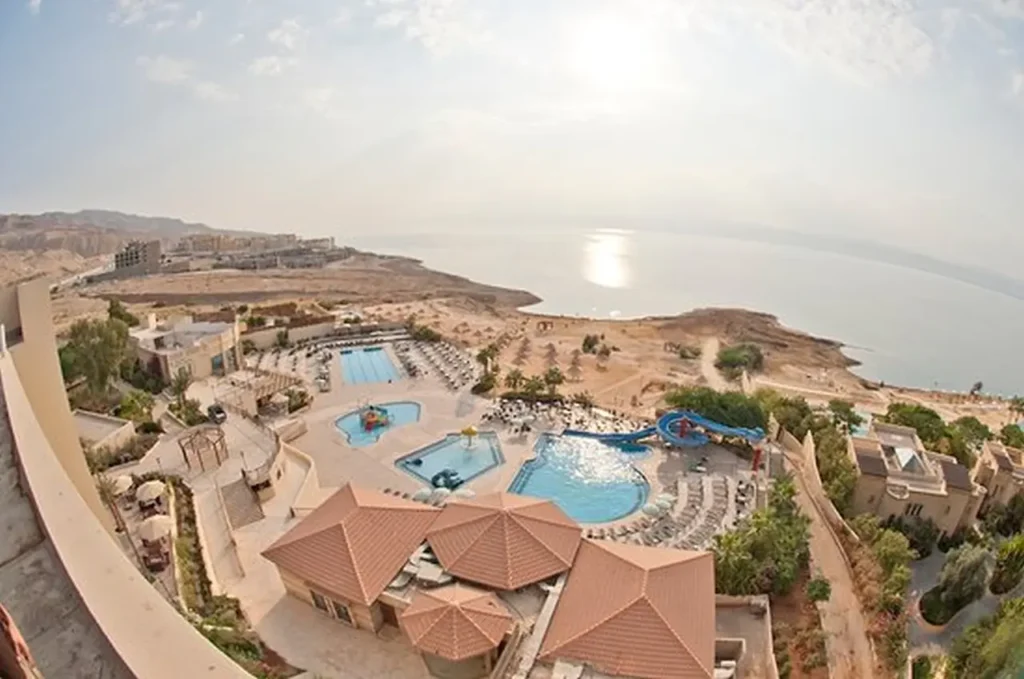
Sunbathing
The Dead Sea area enjoys abundant sunshine, making it an ideal place for sunbathing. Relax on the beach or at the poolside of one of the resorts, soak up the sun, and enjoy the serene atmosphere.
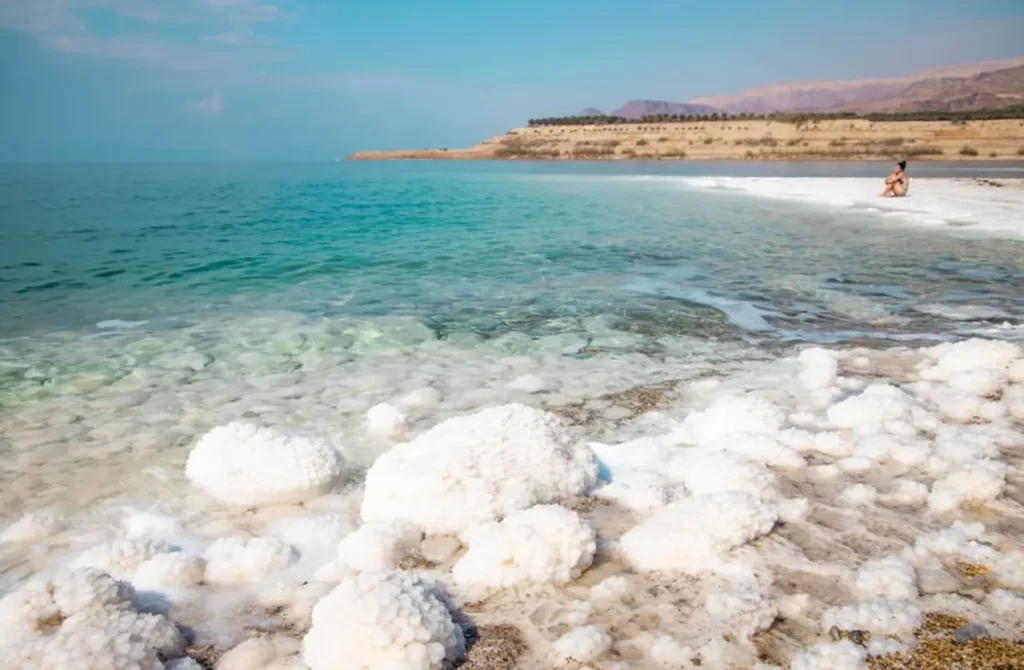
Hiking and Nature Exploration
The Dead Sea region is surrounded by stunning landscapes and nature reserves. You can go hiking in places like the Ein Gedi Nature Reserve or the Masada National Park, which offer beautiful trails, waterfalls, and breathtaking views of the Dead Sea and its surroundings.
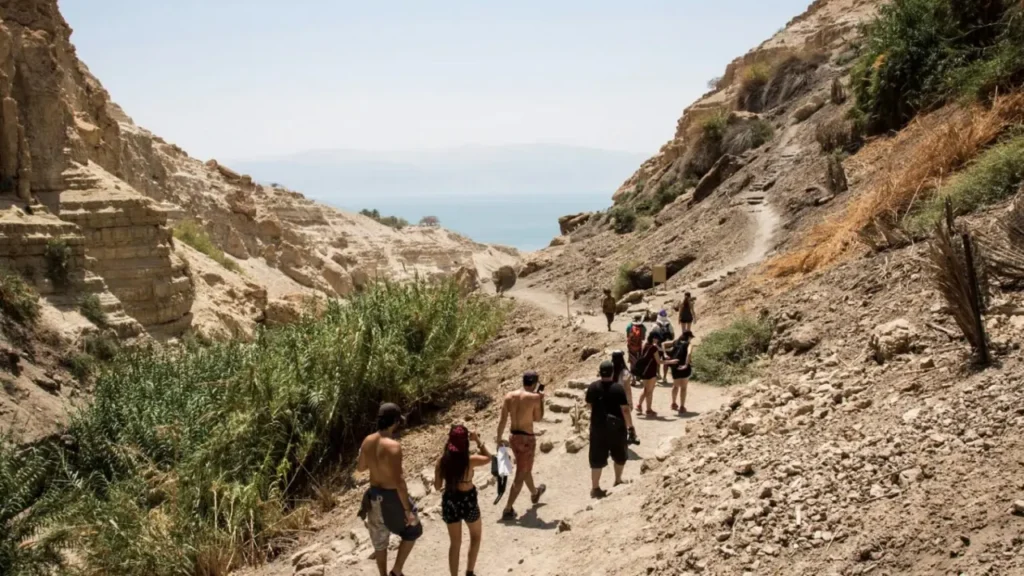
Photography
The unique landscapes of the Dead Sea, with its salt formations, rocky shores, and contrasting colors, provide ample opportunities for photography. Capture the beauty of the sea, the desert landscapes, and the stunning sunsets.
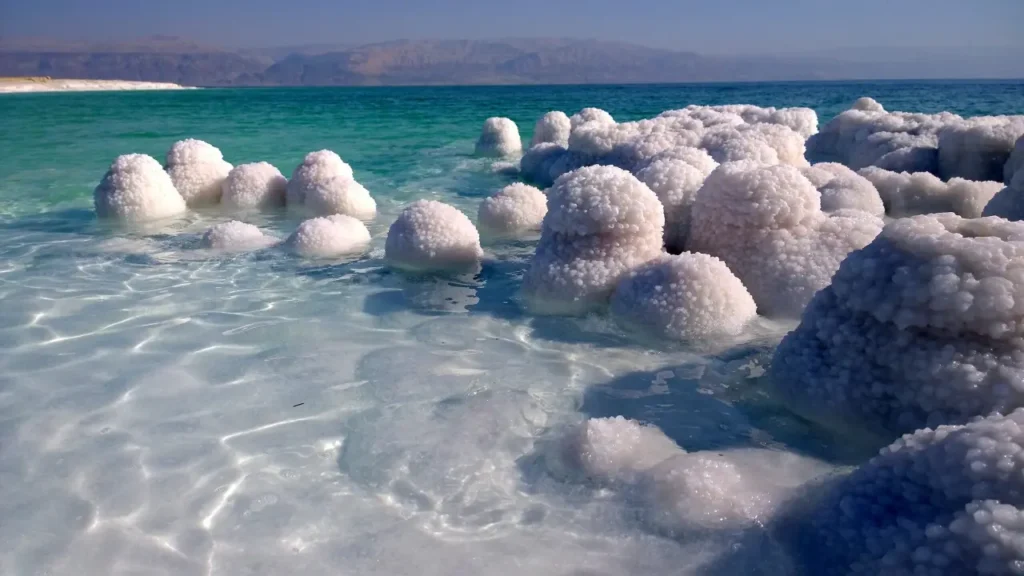
Remember to follow any safety guidelines provided at the beaches and facilities, and be cautious of the strong sun and the potential for dehydration due to the hot climate. Whether you prefer relaxation, adventure, or wellness, the Dead Sea offers a range of activities to suit different interests and preferences.
What should you pay attention to when visiting the Dead Sea?
When visiting the Dead Sea, there are several important factors to consider and pay attention to:
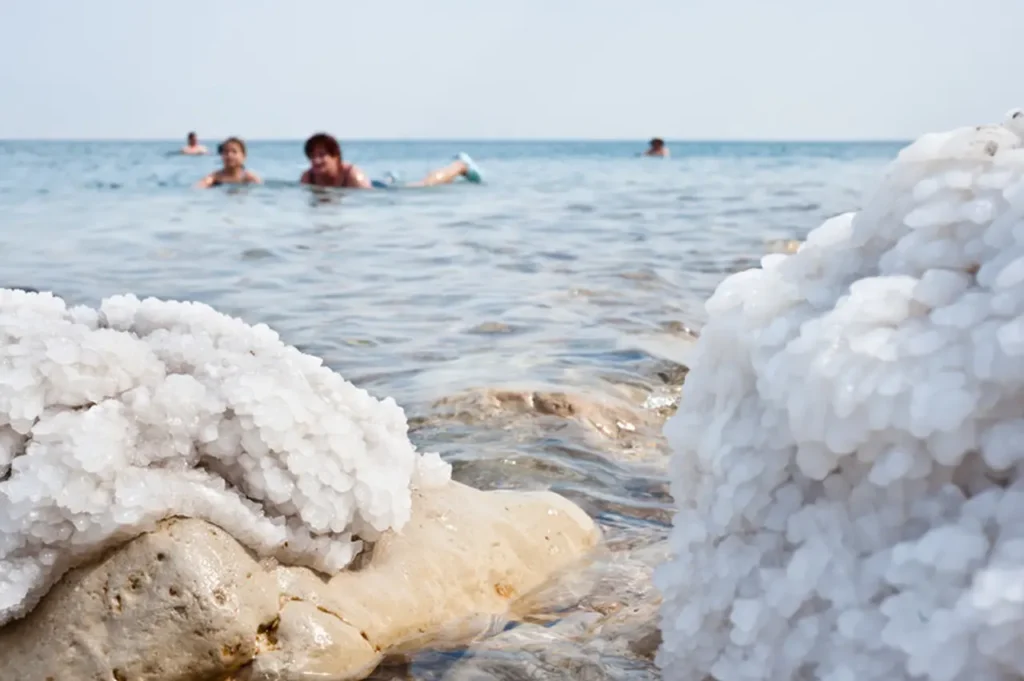
- Safety Precautions: While floating in the Dead Sea is a unique experience, it’s important to be cautious. The high salt content makes it extremely buoyant, but you should still avoid splashing or submerging your face in the water to prevent saltwater from getting into your eyes, nose, or mouth. Additionally, the sea floor can be uneven and rocky, so it’s advisable to shuffle your feet rather than walk to avoid stepping on any sharp objects.
- Sun Protection: The Dead Sea region has a hot and arid climate with intense sunlight. Apply a high SPF sunscreen to protect your skin from the strong UV rays, as the water’s surface doesn’t provide sufficient protection. Wear a wide-brimmed hat, sunglasses, and consider covering up with lightweight clothing to minimize sun exposure, especially during peak hours.
- Hydration: Due to the region’s high temperatures and low humidity, it’s important to stay hydrated while visiting the Dead Sea. Drink plenty of water throughout the day, even if you don’t feel thirsty, to avoid dehydration. Keep a water bottle with you and replenish fluids regularly.
- Eyes and Face Protection: The Dead Sea’s water and air can be highly salty, and the minerals in the water can irritate sensitive areas like the eyes and face. To protect your eyes, it’s recommended to wear swim goggles or avoid fully submerging your head in the water. Additionally, consider applying a barrier cream or moisturizer to your face and lips to prevent dryness or irritation.
- Footwear: The shoreline of the Dead Sea is often covered with crystallized salt formations, which can be sharp and uncomfortable to walk on. It’s advisable to wear waterproof sandals or shoes to protect your feet when walking near the water or on the beach.
- Skin Sensitivity: The minerals and salts found in the Dead Sea can have therapeutic effects on the skin, but they may also cause irritation for some individuals, particularly those with sensitive skin or certain skin conditions. If you have any concerns, consult with a dermatologist before your visit.
- Floating Techniques: Floating in the Dead Sea is a popular activity due to its high salt concentration. However, it’s essential to know the correct floating techniques to ensure a safe and enjoyable experience. Relax and let your body float naturally, avoid any sudden movements, and refrain from swimming vigorously. Maintain a comfortable position and take care not to flip onto your stomach, as it can be challenging to turn back due to the buoyancy.
- Environmental Considerations: The Dead Sea is an ecological wonder, and it’s important to be mindful of its preservation. Avoid using soaps, shampoos, or other products in the sea, as they can disrupt the delicate ecosystem. Additionally, take care not to litter and dispose of any waste appropriately.
- Changing Facilities: While the shoreline of the Dead Sea does have some designated areas for changing and showering, the facilities might be limited or basic. It’s advisable to bring a towel, change of clothes, and any personal toiletries you may need.
- Travel Advisories: Before visiting the Dead Sea, check for any travel advisories or warnings issued by your country’s foreign affairs department or relevant authorities. Stay informed about any potential risks, safety concerns, or specific regulations that may affect your visit.
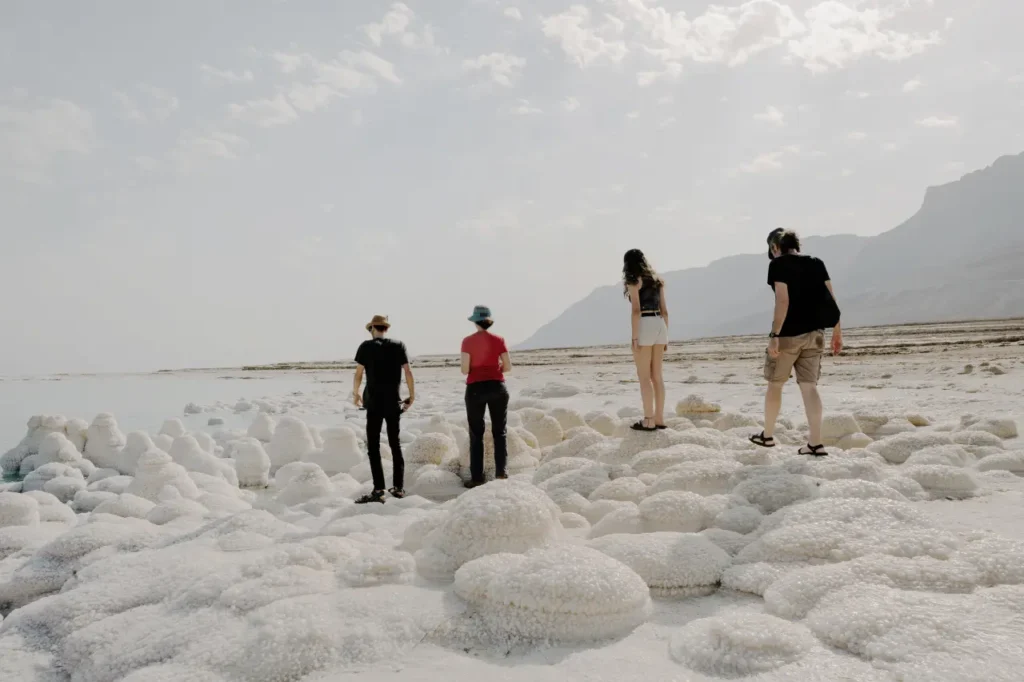
By keeping these considerations in mind, you can make the most of your visit to the Dead Sea while ensuring your safety, well-being, and enjoyment of this unique natural wonder.
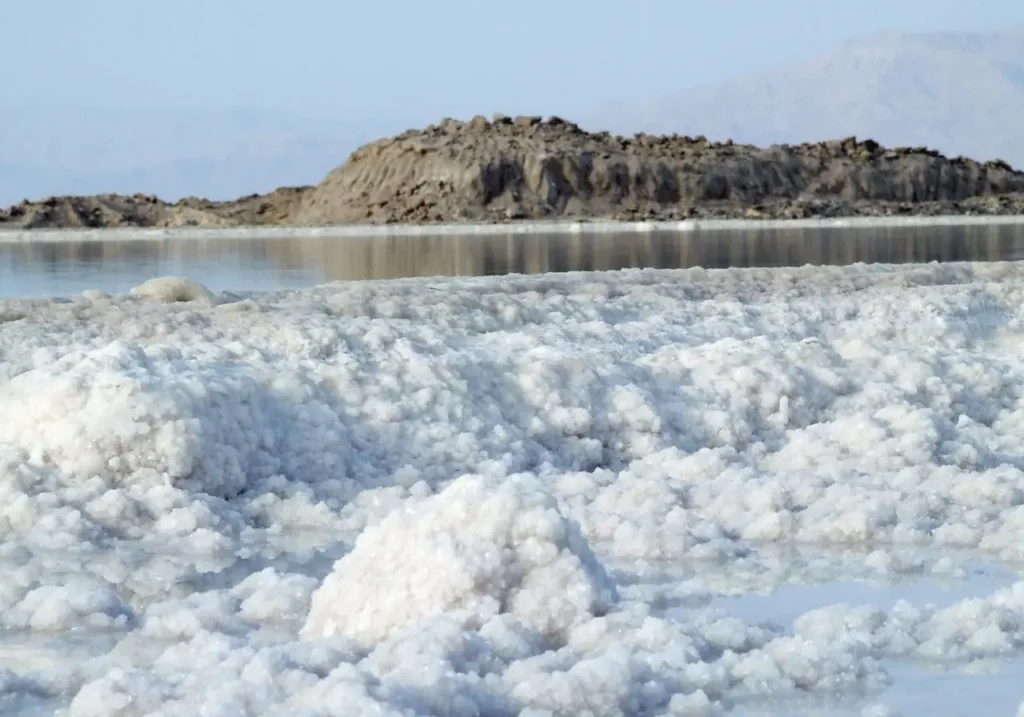
When should we visit the Dead Sea?
The best time to visit the Dead Sea depends on your preferences and the kind of experience you’re seeking. Here are some considerations for each season:
- Spring (March to May): Spring is a pleasant time to visit the Dead Sea. The weather is generally mild, with comfortable temperatures ranging from 20°C to 25°C (68°F to 77°F). The landscape is lush and blooming, with wildflowers adding a burst of color to the surroundings. It’s a great time for outdoor activities, such as hiking and exploring the nature reserves.
- Summer (June to August): Summers at the Dead Sea can be extremely hot, with temperatures often exceeding 40°C (104°F). The heat can be intense, but it also means that the sea and its surrounding pools are warm and inviting. If you can tolerate the high temperatures, you can enjoy floating in the sea and sunbathing. However, it’s important to stay hydrated and take precautions to avoid sunburn.
- Autumn (September to November): Autumn is another pleasant season to visit the Dead Sea. The temperatures start to cool down, ranging from 20°C to 30°C (68°F to 86°F). The crowds are usually smaller than in the summer months, allowing for a more peaceful experience. The autumn colors in the surrounding landscapes add to the beauty of the region.
- Winter (December to February): Winters at the Dead Sea are mild, with temperatures ranging from 10°C to 20°C (50°F to 68°F). While it can be chilly, it’s still a suitable time to visit if you prefer cooler weather. The sea’s temperature remains relatively warm, making it enjoyable for floating. It’s a great time for spa treatments and relaxing in the warm waters.
Overall, the spring and autumn months offer a pleasant balance of comfortable temperatures and fewer crowds. If you prefer warmer weather, you can opt for the summer months, but be prepared for the extreme heat. Winter is a good option if you want to avoid the peak tourist season and enjoy milder temperatures.
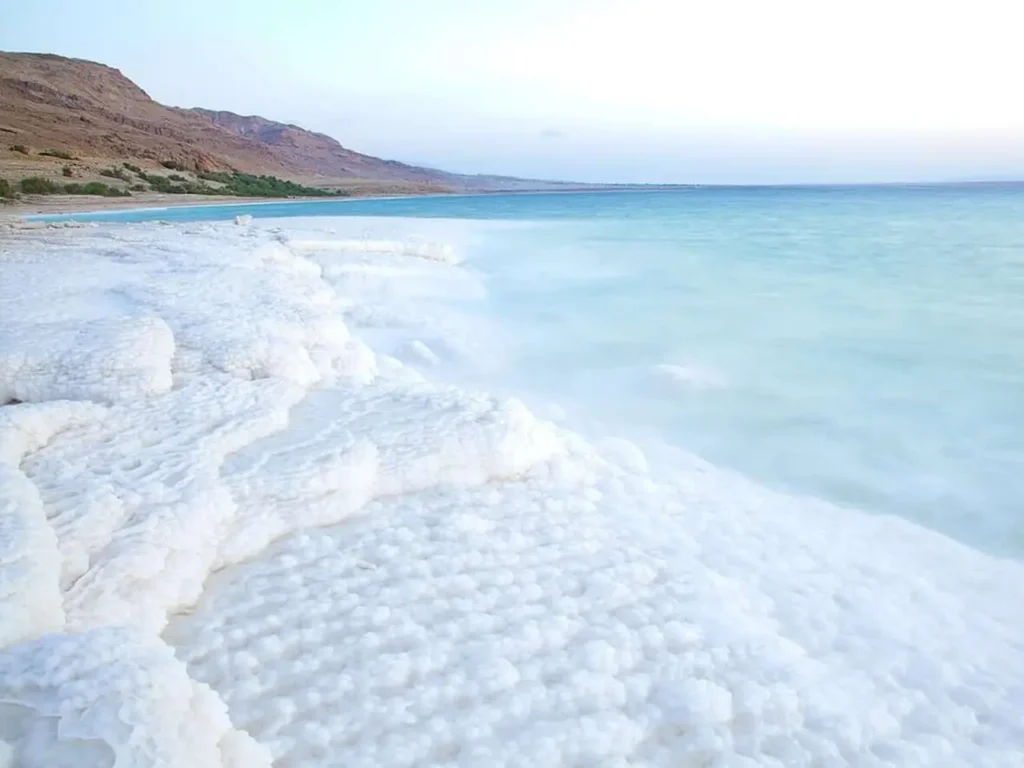
It’s important to note that the Dead Sea’s weather can vary, and it’s always a good idea to check the forecast before your visit. Regardless of the season, make sure to stay hydrated, protect yourself from the sun, and follow any safety guidelines provided at the facilities and beaches.
Above information we have gathered and compiled about the Dead Sea. We hope that this article has provided useful information for readers. We look forward to seeing you in upcoming articles!
